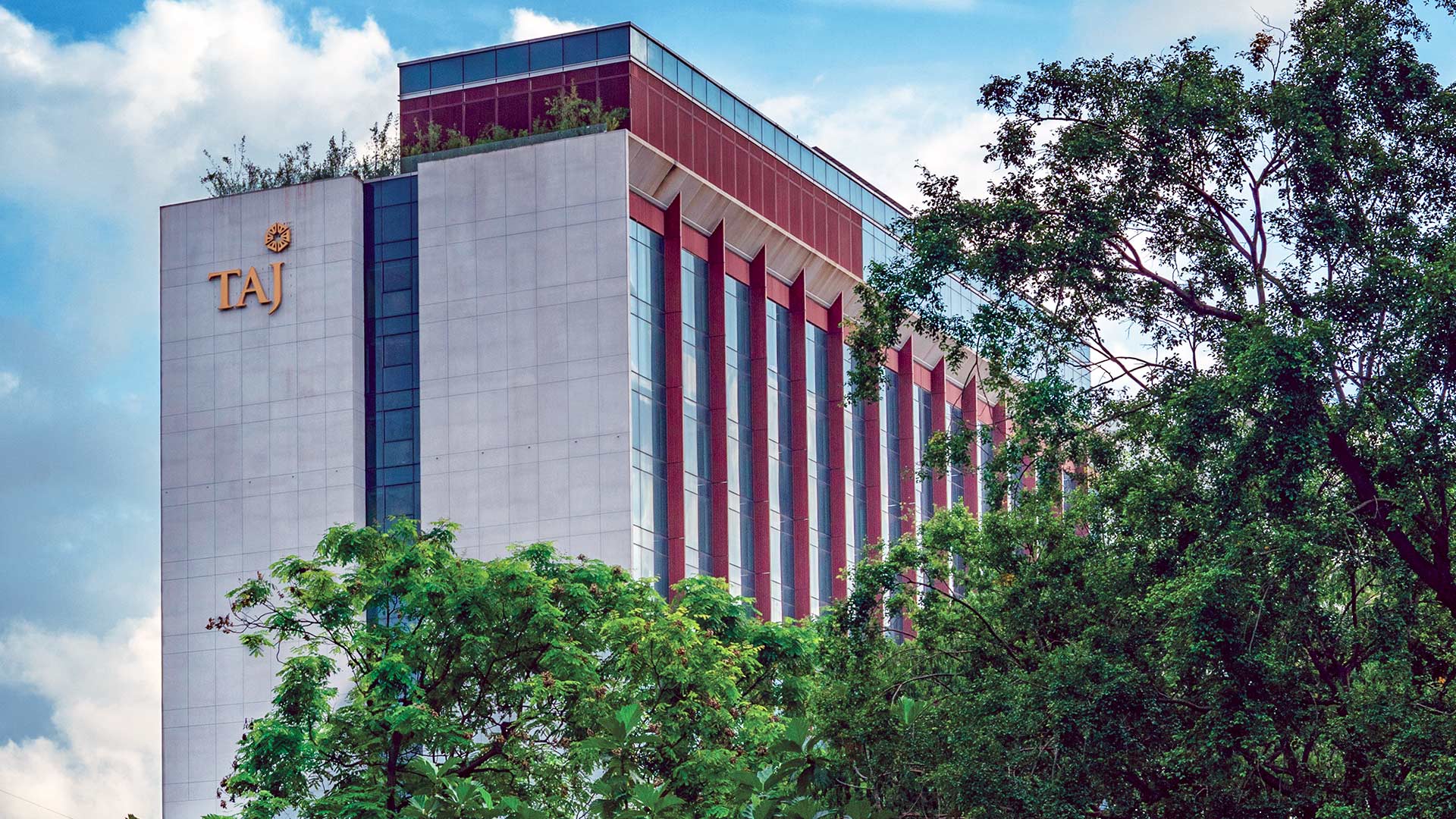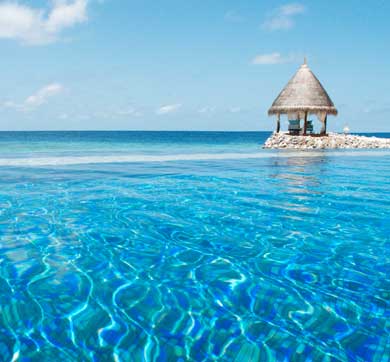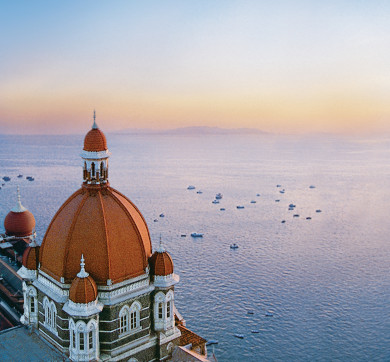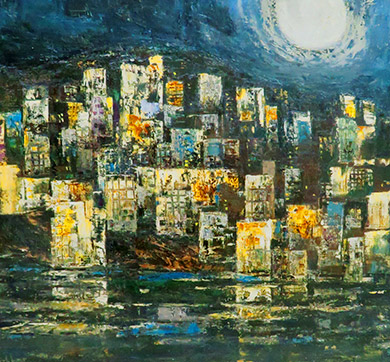March 2024 | 763 words | 3-minute read
A mangrove forest conjures up images of densely packed vegetation growing in an equatorial climate, typically along coastlines and tidal rivers. Seldom, if ever, is a mangrove found within a city, especially a bustling metropolis like Mumbai. And yet, the city is home to a vast mangrove ecosystem in Vikhroli.
In 1948, the Godrej family acquired several hundred acres for setting up an industrial garden township. Considering the rich biodiversity of the mangrove forest on most of this land, the group undertook its protection from the beginning.
The newly-opened The Trees hotel marks not only a coming together of the house of Tatas and the Godrej family, but also the conglomerate’s celebration of art, minute attention to detail and the beauty of purpose and precision. The ambition was to integrate the hotel with other elements on the campus, so that it is not only a tourist destination but also an asset that is animated by workers and residents alike. On the ground floor is a café to tempt residents from nearby flats and employees from the Godrej towers. Also on the ground floor is the ballroom space, with a private courtyard garden.

Live, work and play
The lobby, located on the first floor connecting to the driveway, has all the characteristics of a grand hotel but interpreted in a contemporary way. With soaring ceilings and bespoke artwork commissioned from UK artist Based Upon, it creates a moment of awe. There is also an F&B outlet in the lobby throughout the day.
Beyond the lobby are the meeting and events spaces, with sophisticated industrial detailing and an openness that signals a contemporary workplace approach. On the second floor is the wellness and spa area with five treatment rooms, a relaxation room, salon, retail space, gym and studio.
The third floor has the all-day restaurant, the Taj’s signature Shamiana. Alongside it is Nonya, a pan-Asian restaurant with subtle 1920s Shanghai Art Deco influences. Both have terraces facing out to the spacious pool deck that overlooks the sculpture garden beyond. The hotel prides itself on having a female concierge and knowledgeable front desk staff, who are happy to escort guests through the sculpture park and the many examples of public art, including a stunning Subodh Gupta installation.
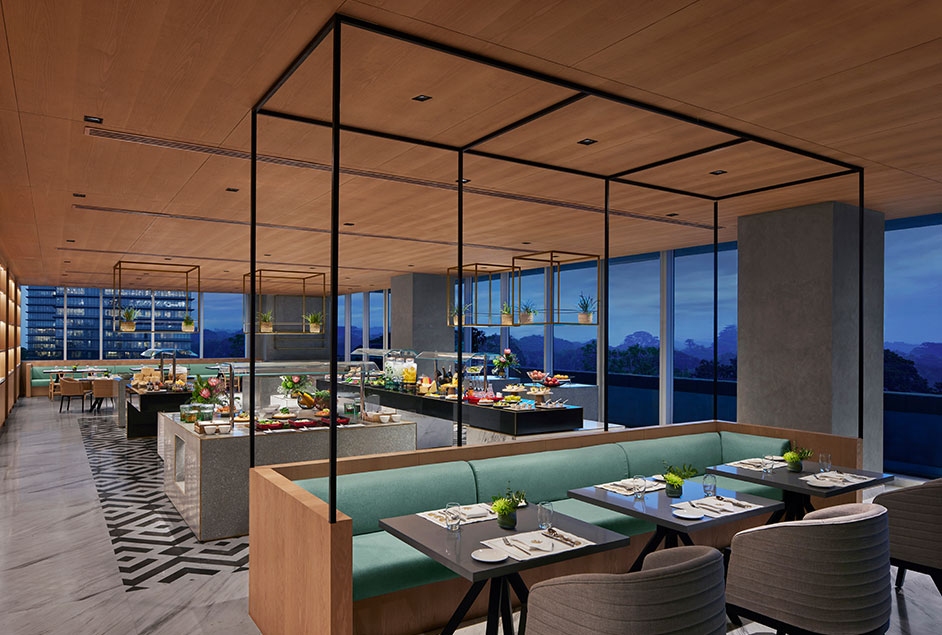
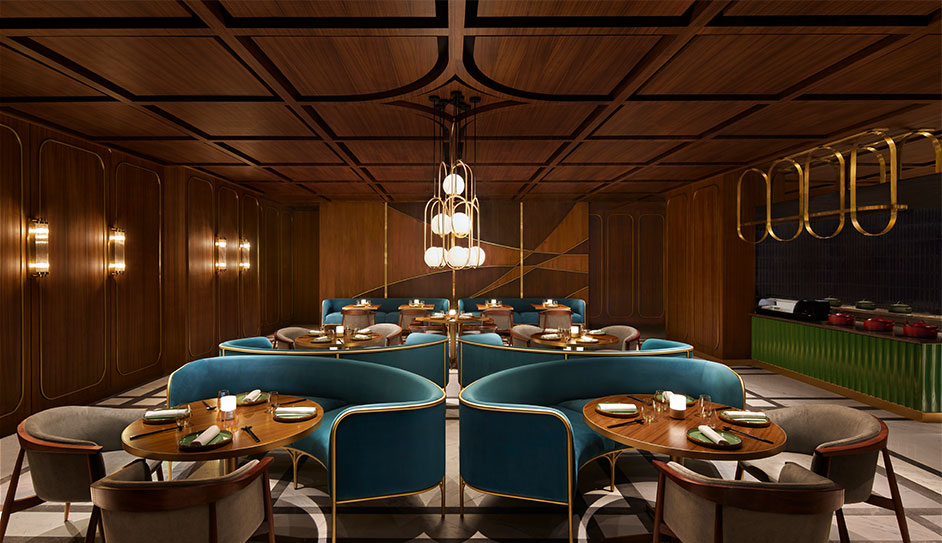
Immersive art
A characteristic feature of the property is the especially commissioned art. The most spectacular is the central panel in the lobby. From Where Did This Paradise Spring? celebrates the mangroves’ wild deltas and traces its unique textures and patterns during different times of the day. The data was distilled and sculpted, both digitally and by hand, in Based Upon’s London-based studio before being finished in liquid metal. The result captures the topographical landscape, enhanced by algorithmic lighting that simulates the movement of the sun.
Elegant execution
From Where Did This Paradise Spring? unfolds throughout the hotel. Guests are invited to experience the hotel’s connection with the landscape through a sculpture, book, film, soundtrack and poem. The backdrop to the reception is also inspired by the contours of the mangroves, detailed poetically in layered sheets of brass and finishes in black marble.
The banquet reception continues the theme in wood and stone. In the spa lift lobby, the motif is found in warm tones of plaster to contrast with the grey stone and copper accents of the spa. Vriksha, the signature spa treatment, encapsulates the philosophy behind Vriksho rakshathi rakshitaha — ‘the one who protects trees, is protected by them’. The curated 120-min session begins with a soothing foot massage, followed by a body wrap infused with natural cooling herbs, sandalwood and aloe vera. While the body soaks the goodness of the mixture, a head massage is administered with berry oil. A shower, followed by an hour-long massage wraps up the treatment.
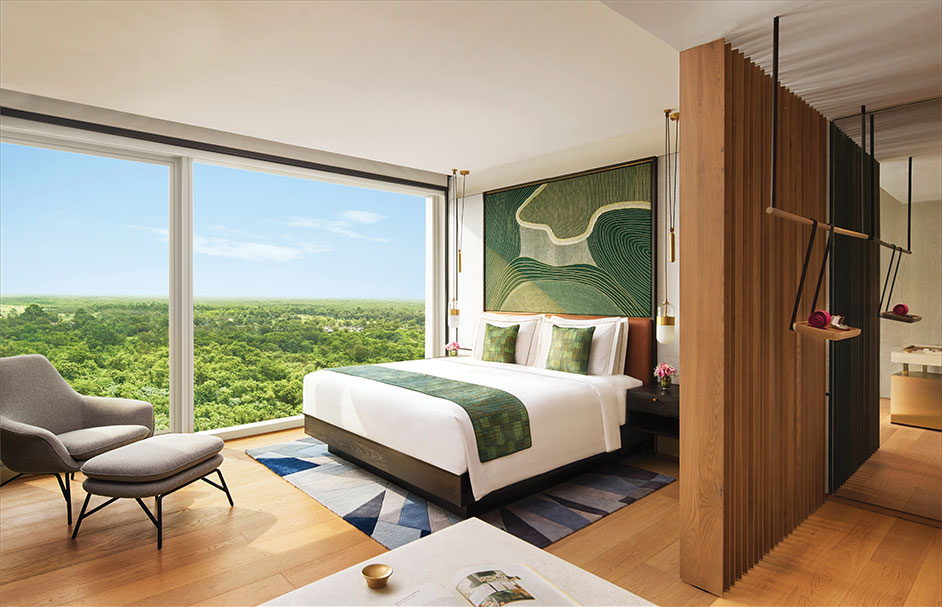
The abundance of centuries-old trees in the surroundings is etched in wood on Shamiana’s entrance, and the Alexandrine parakeet, which has been nesting there for generations, is seen flitting about. The mangrove motif is picked up in the guest rooms too, finding reflection on the headboards, soft furnishings and hand-tufted Jaipur rugs
The beauty and significance of the city’s green lifelines come alive at The Trees in myriad ways, making it unlike any other city hotel.
—Rakhshanda Jalil
This review first appeared in the Taj Magazine Vol 50 – No 2.




